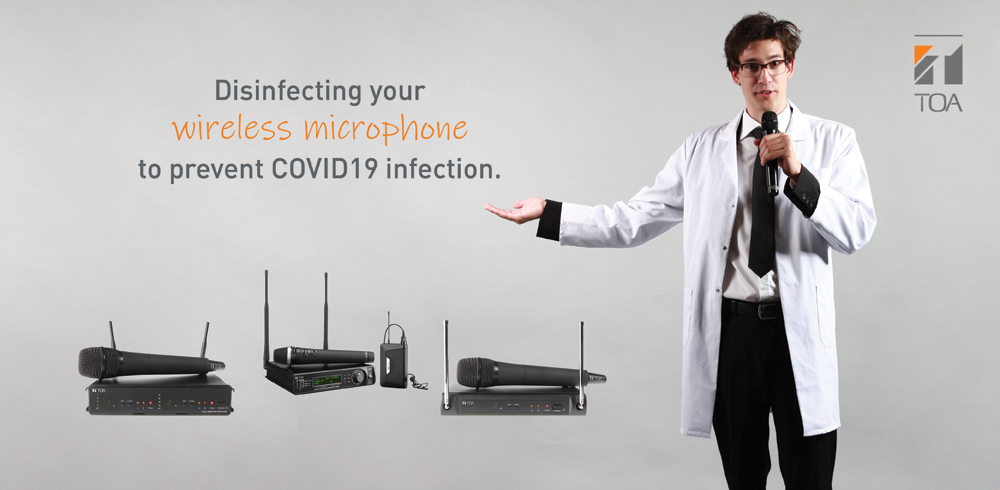Disinfecting your Wireless Microphone to prevent COVID19 infection

Due to the global impact of COVID-19 in Singapore and other nations across the globe, the World Health Organization (WHO)--in an effort to curb its spread--released a number of essential information on how you should wash your hands, sanitize, and disinfect, among others. However, do you ever wonder how you expose yourself to germs all over again by touching your phone, television, and wireless microphone?
Putting the said factors into consideration, it is best to properly disinfect your gadgets as well as appliances so as to prevent the spread of COVID-19, and in the process enjoy their features to the fullest. This is most true if you are a business owner who uses appliances and gadgets during operations. With regard to your wireless microphone, you can rest assured that with the right approach, you can achieve smooth business undertakings and reduce the chances of infection in the process.
The question still stands, though, how do you disinfect your wireless microphone? Read on for practical and straightforward tips.
Wipe, not spray
When utilizing disinfectant to clean wireless microphone in Singapore, do not spray the solution onto the device because it may damage its electronic components. Rather, apply it with a disposable cloth or paper towel. Before doing so, make sure to remove the batteries as they may leak and develop corrosion over time.
For a more eco-friendly and affordable cleaning and disinfectant solution, you can mix one part water and one part vinegar. It kills bacteria as well as germs without harming the environment or burning a hole in your pocket. Great if you own a small business that has limited funding.
Do not forget hard to reach areas
When cleaning and disinfecting your wireless microphone, do not neglect hard-to-reach, internal parts. This is mandatory because in the long run, dirt, mold, and mildew, among others, may accumulate. This would damage certain components after some time. So, if you are having trouble reaching specific parts, try using a dry toothbrush, cotton swab, or toothpick to clean them.
Practice caution
If you are cleaning a critical component, say the circuit breaker, make sure to use the right solution. That being said, unless you want an excuse to purchase a new wireless microphone in Singapore, stay away from water-based ones. Instead, opt for a specialized contact cleaner (can be purchased from electronics stores) or rubbing alcohol.
If you plan to use cotton swabs, make sure to opt for one without frizzy ends as they may get stuck on the circuit board and cause it to break down after some time. For the best results, it is best to go for a microfiber cloth that does not leave lint when used.
Summing up
By performing the aforementioned tips and pointers, you can achieve effective and efficient cleaning and disinfection of your wireless microphone, all while reducing the chances of being infected with COVID-19. Remember, we are in the midst of a pandemic, and it is best to be vigilant and clean your appliances, including your wireless microphone in Singapore.
As straightforward as it may seem, take note that it can play a major role in helping to “flatten the curve”, at the same time enabling you to enjoy your wireless microphone features to the fullest. All, without hampering business operations if you will be using your wireless microphone for the said purpose.










